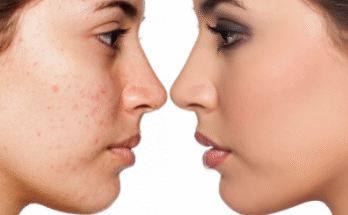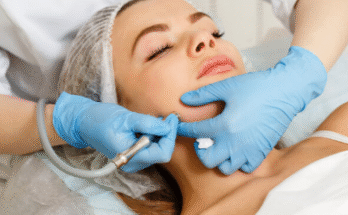Acne can feel like an unwelcome guest that shows up at the most inconvenient times. Whether it is a stubborn pimple before a big event or an ongoing skin concern, one of the most frustrating parts is the redness that draws attention to the breakout.
While acne itself needs consistent care to heal, there are simple ways to calm redness and help your skin look more even in a shorter time.
If you have ever wondered how to soothe acne redness quickly without harming your skin, this guide will walk you through effective approaches that are gentle, practical, and easy to try.
Understanding Why Acne Looks Red
Before talking about solutions, it helps to know why acne appears red in the first place. The redness is often a sign of inflammation. When a pore becomes clogged with oil, dead skin cells, or bacteria, the body responds by sending white blood cells to the area. This creates swelling, tenderness, and that noticeable flush of color. For many people, even when a breakout starts to shrink, the redness can linger longer than the pimple itself. Calming that response is the key to making your skin look more comfortable and less irritated.
Quick Comfort Measures at Home
One of the fastest ways to calm acne redness is to use temperature to your advantage. A clean, cool compress placed gently against the skin can reduce swelling and provide immediate relief. It is best to wrap an ice cube in a soft cloth or use a chilled spoon rather than applying ice directly to the skin, since direct contact can cause irritation. A few minutes of cool pressure can make a noticeable difference in how inflamed the spot appears.
Another simple home remedy is green tea. This popular drink contains antioxidants and natural compounds that help reduce redness. Steeping a bag of green tea, letting it cool in the refrigerator, and then placing it on the skin can provide a calming effect. Some people even use cooled green tea as a gentle toner for the whole face, though it is important to test on a small area first to make sure the skin feels comfortable.
Aloe vera is also a soothing option. Known for its ability to calm sunburns, aloe has hydrating and anti-inflammatory properties that can work well on acne redness. A thin layer of pure aloe vera gel, especially if chilled, can bring down the look of irritation without clogging pores.
Choosing Gentle Skincare Products
Skincare products play a big role in how quickly redness fades. When the skin is already inflamed, harsh cleansers or scrubs can make the problem worse. Instead, look for a mild, fragrance-free cleanser that removes dirt and oil without stripping natural moisture. Using lukewarm water rather than hot water also helps avoid unnecessary flushing.
For spot treatment, ingredients like niacinamide and azelaic acid are known for reducing redness. Niacinamide is a form of vitamin B3 that strengthens the skin barrier and makes skin less reactive. Azelaic acid is gentle but effective at calming irritation while also targeting the bacteria that contribute to acne. Applying a small amount of these treatments can gradually help the redness fade.
It is also wise to follow with a lightweight moisturizer. Some people with acne avoid moisturizers because they fear clogging pores, but dehydrated skin often reacts with more irritation. A gel-based or oil-free moisturizer locks in hydration, keeps the skin balanced, and makes redness less noticeable.
Makeup as a Confidence Boost
While skincare works to calm acne redness over time, makeup can offer a quick boost in confidence. A green-tinted primer or concealer can help neutralize redness because green sits opposite red on the color wheel. After blending gently, a layer of lightweight foundation or tinted moisturizer can even out the overall appearance. Choosing non-comedogenic products, which are designed not to block pores, ensures that makeup will not worsen breakouts. Always remember to remove makeup thoroughly at the end of the day so skin can breathe and heal overnight.
Lifestyle Habits That Help
Soothing acne redness is not just about what you put on your skin; it also relates to daily habits. Stress, for instance, can make breakouts look and feel worse because it triggers hormonal changes in the body. Taking time for calming activities such as deep breathing, stretching, or listening to music may not erase redness instantly, but it helps prevent flare-ups from becoming more intense.
Diet can also play a supporting role. While food does not directly cause acne for everyone, certain choices can influence inflammation in the body. Drinking enough water, eating fresh fruits and vegetables, and limiting processed foods may make the skin less prone to persistent redness. Additionally, avoiding touching the face with unwashed hands reduces irritation and prevents bacteria from spreading.
Another helpful habit is protecting the skin from the sun. Sunburn and excess heat make acne redness stand out more. Applying a broad-spectrum sunscreen that is oil-free and designed for sensitive or acne-prone skin ensures that the skin stays protected without adding heaviness.
When Redness Needs Extra Care
Sometimes, redness from acne lingers longer than expected or appears alongside discomfort. In these cases, consulting a dermatologist can make a difference. Professionals can recommend treatments such as topical retinoids, light therapy, or prescription medications that address both the acne and the inflammation. Seeking expert help does not mean the problem is severe; it simply means you are giving your skin the extra care it needs.
For people who experience post-acne marks, which often look like red or brown spots that remain after the blemish heals, there are targeted solutions available. Ingredients such as vitamin C and gentle exfoliating acids can brighten the skin over time and fade those marks. Patience is important because these spots can take weeks or even months to fully disappear, but steady care ensures progress.
Staying Patient and Kind to Your Skin
Perhaps the most important part of soothing acne redness is patience. Skin heals at its own pace, and while quick fixes can make a temporary difference, lasting improvement comes with consistent care. Avoid the temptation to squeeze or pick at blemishes, as this almost always leads to more redness and increases the risk of scarring.
Being kind to your skin means treating it with gentle products, giving it time to recover, and not letting a breakout define how you feel about yourself. Everyone experiences moments when their skin is not at its best, and redness from acne is nothing to be ashamed of. With small, thoughtful steps, you can support your skin’s natural healing process and feel more comfortable in the meantime.
Final Thoughts
Acne redness can feel discouraging, but it does not have to take control of your confidence. By combining quick comfort measures like cool compresses or aloe vera with long-term care such as gentle skincare, balanced lifestyle habits, and sun protection, you can help calm inflammation and encourage a clearer complexion. Makeup can provide a temporary boost when needed, and professional care is always available if the redness persists.
Above all, remember that your skin is resilient. Each step you take toward soothing redness is also a step toward healthier, stronger skin in the future. Treating acne with patience and kindness not only helps with the physical appearance but also strengthens your self-confidence. With the right approach, calming acne redness quickly becomes possible, and your skin can begin to look and feel more at ease.

